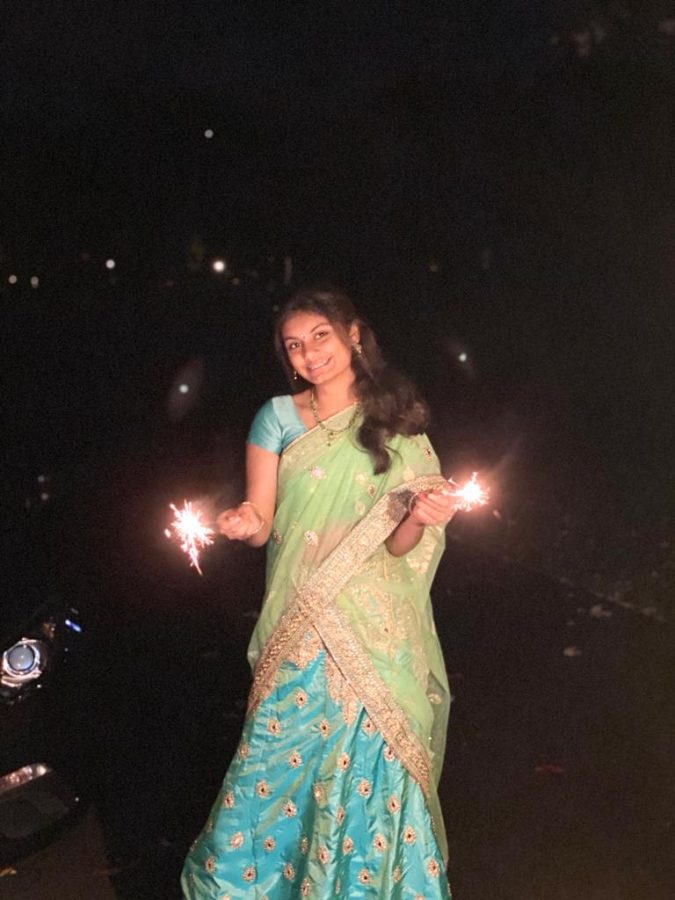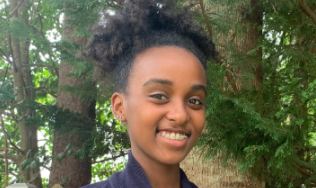Diwali: Indians celebrate festival of lights
photo contributed by Gayatri Dhavala
Sophomore Gayatri Dhavala holds firecrackers as she celebrates Diwali with her family.
November 13, 2020
Known to illuminate every street in India, Diwali is a spiritual celebration marking the triumph of light against darkness and good against evil. According to National Geographic Kids, the two different celebrations of Diwali include when Lord Krishna defeated the demon Narakasura and King Rama’s return after defeating Ravana.
On Nov. 14, the festival will be celebrated by Hindus, Sikhs, Jains and Buddhists worldwide. The date of this holiday depends on the moon’s positions and changes every year, ranging from October to November.
On Diwali, lights and bright colors are showcased through many decorations inside the home, such as diyas, small clay oil lamps believed to keep evil forces away, and jasmine flower garlands strung along walls to accompany the main decor.
“We light diyas throughout the interior and exterior of the house,” senior Vinati Konda said. “One of my favorite decorations to do is [rangoli], where we use various colors of powdered chalk to create pretty designs outside our houses.”
Some Indians perform Diwali traditions in one day while others celebrate in the span of five days. Some Indian families start decorating after shopping for gifts, ingredients and decor. They also prepare the food and set up shrines at home. At those shrines, people do pooja, a worship ritual. On Diwali day, people trade gifts with family and light fireworks.
“Usually, our Diwali celebration consists of wearing traditional clothes and going to the temple to attend pooja,” Konda said. “A general tradition of the Diwali celebration is to do pooja to the goddess Lakshmi because it is believed that she will bless us with wealth and prosperity. In the evening, we attend a gathering with our friends to light fireworks and celebrate.”
During the celebrations, people feast with family and friends. Diwali feasts include large collections of Indian appetizers, entrees and desserts.
“Some of the foods my parents prepare are pulihora and vada for lunch and biryani for dinner,” Konda said. “We either make or [buy] Indian sweets such as semiya, payasam or ladoo.”
This year, although people are limited in their usual group traditions, many families still plan to meet with family while following social distancing protocols.
“This year, I am going to my cousin’s house for Diwali to keep the number of people we are seeing lower,” freshman Navya Mandava said.
According to Quartz India, about one billion families celebrate Diwali each year but after the coronavirus, there have been about eight million cases in India. It’s likely Indians there and here will be limiting contact and only celebrate with immediate family members.
“Due to [the coronavirus], we won’t be meeting any friends or going to the temple,” Konda said. “But we will continue to make the food and maybe dress up.”



